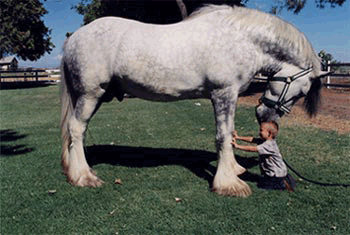What is it?
Strangles is a highly contagious and serious infection of horses and other equids caused by the bacterium, Streptococcus equi. The disease is characterized by severe inflammation of the mucosa of the head and throat, with extensive swelling and often rupture of the lymph nodes, which produces large amounts of thick, creamy pus.
Horses of all ages are susceptible, though strangles is most common in animals less than 5 years of age and especially in groups of weanling foals or yearlings. Foals under 4 months of age are usually protected by colostrum-derived passive immunity.Strangles is main-tained in the horse population by carrier horses but does not survive for more than 6–8 weeks in the environment. Although the organism is not very robust, the infection is highly contagious. Transmission is either by direct or indirect contact of susceptible animals with a diseased horse. Direct contact includes contact with a horse that is incubating strangles or has just recovered from the infection, or with an apparently clinically unaffected long-term carrier. Indirect contact occurs when an animal comes in contact with a contaminated stable (buckets, feed, walls, doors) or pasture environment
 Treatment
Treatment
Diagnosis can be confirmed by culturing pus from the nose, from abscessated lymph nodes or from the throat of clinically affected horses.
There is argument among veterinarians as to whether or not to treat an animal with strangles with antibiotics. Many veterinarians think that treatment will impair the development of immunity and may predispose an animal to prolonged infection and to bastard strangles. Treatment of a horse in the early stages of strangles is usually effective. The medication mainly used is penicillin G. If the disease is more advanced, then most veterinarians will not use antibiotics but rather will recommend nursing care and trying to hasten the development of abscesses (which can be drained) by poulticing. Antibiotics may, however, be used if complications arise.
Coverage you should have
Major medical and mortality. MM policy might cover costs associated with treating horses. Mortality would cover value of horse if it died from strangles. This is useful in case your farm has an outbreak boarders cannot sue you if there horse is infected.
Sources:
http://www.omafra.gov.on.ca/english/livestock/horses/facts/03-037.htm
